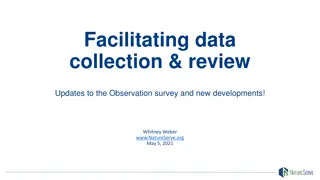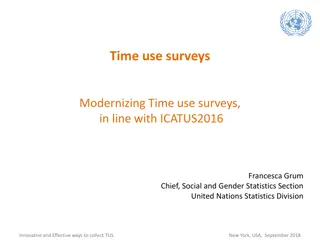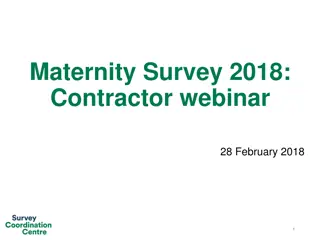Exploring Likert Scale and Survey Examples for Effective Data Collection
Dive into the world of Likert scale with examples for surveys covering agreement, relevance, frequency, importance, quality, likelihood, dichotomous scales, three-point scales, four-point scales, five-point scales, and seven-point scales. Understand the nuances of expressing opinions, preferences, and feedback through structured scales.
Download Presentation

Please find below an Image/Link to download the presentation.
The content on the website is provided AS IS for your information and personal use only. It may not be sold, licensed, or shared on other websites without obtaining consent from the author. Download presentation by click this link. If you encounter any issues during the download, it is possible that the publisher has removed the file from their server.
E N D
Presentation Transcript
Likert Scale Examples for Surveys AGREEMENT Agree Strongly Agree Moderately Agree Slightly Disagree Slightly DisagreeModerately Disagree Strongly Agree Disagree or Agree Undecided Disagree StronglyAgree Agree Undecided Disagree StronglyDisagree Agree Very Strongly Agree Strongly Agree Disagree Disagree Strongly Disagree Very Strongly Completely Agree MostlyAgree SlightlyAgree SlightlyDisagree MostlyDisagree CompletelyDisagree Disagree Strongly Disagree SlightlyDisagree SlightlyAgree Agree Agree Strongly VALUE High Moderate Low None RELEVANCE Excellent Somewhat Poor FREQUENCY VeryFrequently Frequently Occasionally Rarely VeryRarely Never Always VeryFrequently Occasionally Rarely Very Rarely Never Always Usually AboutHalf theTime Seldom Never Always VeryOften Sometimes Rarely Never A GreatDeal Much Often Sometimes Almost Always To a ConsiderableDegree
Somewhat Little Never Seldom Never Occasionally Seldom IMPORTANCE 0 = Not Important AtAll 1 = Of Little Importance 2 = Of Average Importance 3 = Very Important 4 = AbsolutelyEssential Very Important Important ModeratelyImportant SlightlyImportant Not Important Very Important ModeratelyImportant Not Important QUALITY VeryGood Good Acceptable Poor VeryPoor Very Poor Below Average Average Above Average Excellent Good Fair Poor LIKELIHOOD To a GreatExtent Somewhat Very Little Not at All Like Me Not Like Me True False Almost Always True Usually True Often True Occasionally True Rarely True Usually Not True Almost NeverTrue Definitely VeryProbably Probably Possibly ProbablyNot DefinitelyNot Not likely Somewhatlikely Verylikely DichotomousScales: Yes No Fair Unfair Agree Disagre True False e Three-PointScales:
More than I wouldlike Aboutright Less than I wouldlike Too Harsh About right TooLenient Too Strict About right TooLenient Too heavy AboutRight Too light Too much Aboutright Too little Extremely Moderately Not atall Four-PointScales: Most of thetime Some of thetime Seldom Never StronglyAgree Agree Disagree StronglyDisagree Definitely won t Probablywon t Probably will Definitelywill Five-PointScales: Muchbetter Somewhatbetter Stayed the same Somewhat worse Much worse StronglyAgree Agree Undecided Disagree StronglyDisagree VeryHigh AboveAverage Average BelowAverage VeryLow Excellent AboveAverage Average BelowAverage VeryPoor Verygood Good Fair Poor Very poor Muchhigher Higher About thesame Lower Much lower Very satisfied Satisfied Neither Dissatisfied Verydissatisfied Almostalways Often Sometimes Seldom Never Extremely Very Moderately Slightly Not at all Very important Important Fairlyimportant Slightlyimportant Not important Seven-PointScales:
very dissatisfied moderately dissatisfied slightly dissatisfied neutral slightly satisfied moderately satisfied very satisfied far below moderatelybelow slightly below met expectations slightly above moderatelyabove far above verypoor poor fair good very good excellent exceptional























